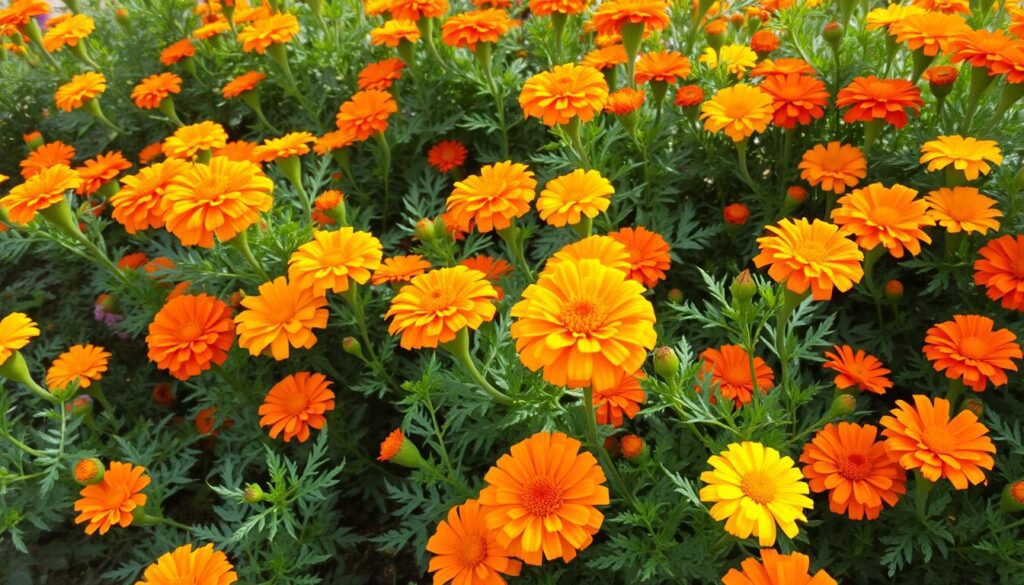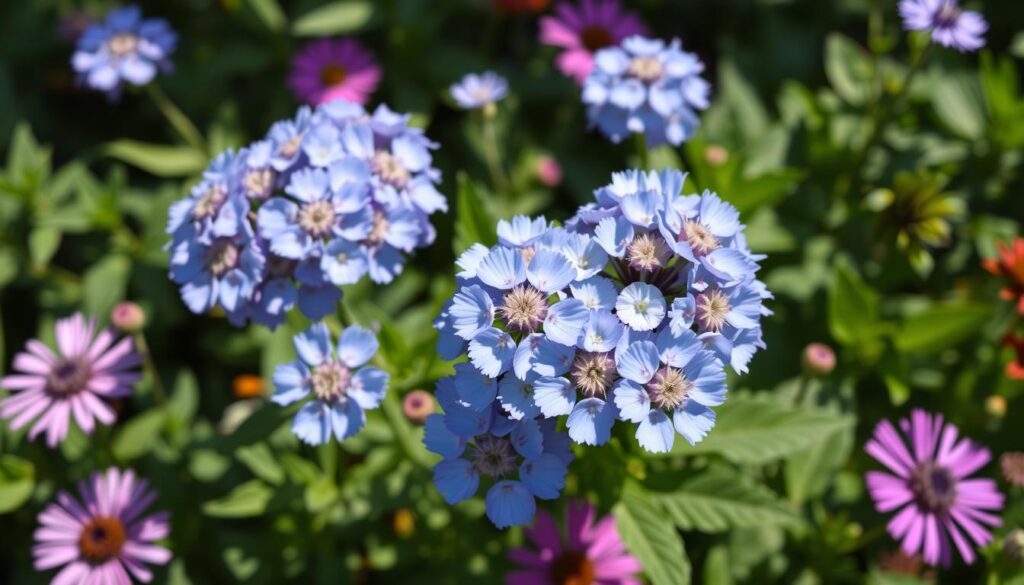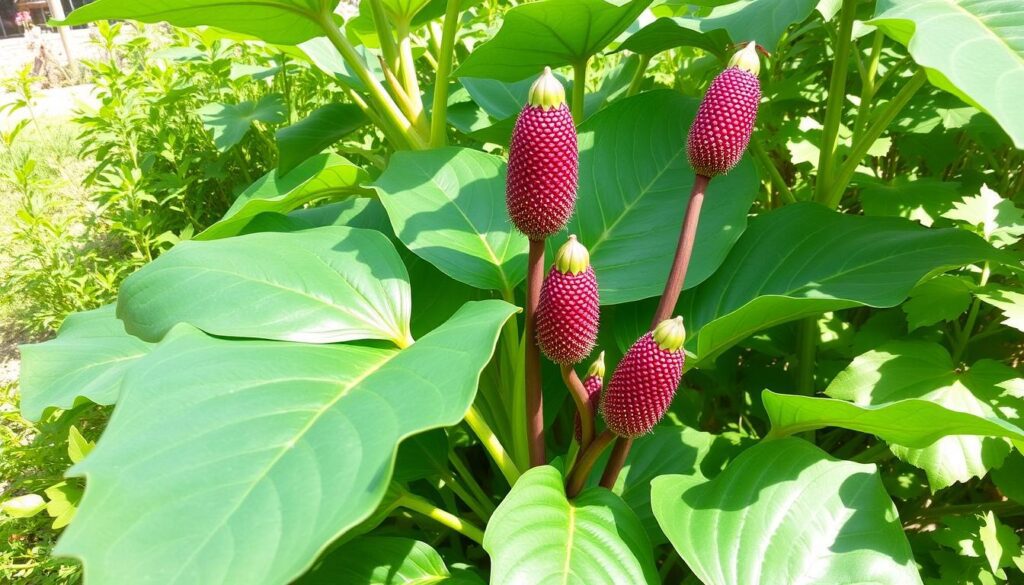7 Easy-to-Grow Annuals from Seed for Your Garden
Are you ready to brighten up your garden with beautiful flowers? Planting annuals from seed is a great way to add color and texture without spending a lot. You can choose from easy-to-grow flowers like marigolds and cosmos. These plants need little care but make a big impact. They’re perfect for anyone, whether you’re an expert or just starting.
Discover the fun of growing annuals from seed. It’s a rewarding experience that brings joy to your garden all season.
Introduction to Growing Annuals from Seed
Walking into the garden center to pick flowers for spring can be fun. But, growing annuals from seed has many perks. You get to pick from more plants, find new ones, make your own mix, control growth, plan ahead, and see what works best in your garden.
Benefits of Starting Annuals from Seed
Choosing to grow annuals from seed lets you pick from many varieties. Suppliers check their seeds to make sure they work well, showing the germination date and rate. Some seeds last for years, but others, like parsnip seeds, should be fresh each year.
Key Considerations for Seed Starting
Think about when to plant seeds based on your area and when it stops freezing. Seeds grow best with the right water, air, light, and heat, depending on the plant. For starting seeds, you can use mixes without soil or different containers like wooden or plastic trays.
Planting seeds usually takes 4 to 12 weeks before moving them outside. Make sure to water them right to help them grow well. After they sprout, they need lots of light to grow strong. Moving them carefully to the garden is key to their success.
Learning about growing annuals from seed opens up many possibilities. Gardeners can make a garden that’s truly their own and full of life.
Marigolds: Vibrant and Easy
Marigolds are a favorite in gardens for their joy and ease of growth. With over 50 species, they include the popular French and African marigolds. The Aztecs used these flowers in their Day of the Dead celebrations, showing their deep cultural roots.
Marigold Varieties and Colors
Marigolds shine in a variety of colors, from golden to bold oranges and reds. Whether you like the delicate French marigolds or the bigger African ones, there’s a type for everyone. These flowers draw bees and butterflies, making gardens more lively.
Planting and Care Tips
Marigolds are simple to grow from seeds, making them a budget-friendly choice. Plant them in the garden after the last frost, or start indoors six to eight weeks early. Space them 12 inches apart, whether planting directly or transplanting.
Once planted, marigolds are easy to care for. They like well-drained soil and can grow in poor soil too. Cutting off dead flowers encourages more blooms. They bloom in about eight weeks and germinate in five to 10 days.
Marigolds bring vibrant colors, are easy to grow, and attract pollinators. They’re perfect for any gardener wanting to brighten their space. Whether you’re experienced or new to gardening, marigolds will surely impress.

Bachelor’s Buttons: Charming and Drought-Tolerant
Bachelor’s buttons are known for their bright blue, pink, and purple colors. They love hot, dry places. These flowers grow fast, taking about 65 days to bloom from seed. They keep flowering for 10 weeks, making them a top choice for spring.
There are many bachelor’s buttons, like ‘Black Ball’ and ‘Snowman Ball’. You can find them at trusted places like Geoseed and Johnny’s Select Seeds. These flowers can handle frost and mild winters, perfect for gardens in USDA Hardiness Zones 2 to 11.
To grow these flowers, start seeds indoors six to eight weeks before the last spring frost. Or, plant them outside when the weather warms up. They grow well in full sun and need well-drained soil, reaching up to 3 feet tall.
Keep the flowers looking great by removing dead blooms. Cutting back the plants helps them produce more flowers. You can use these flowers in bouquets, dried arrangements, and more.

While bachelor’s buttons are easy to grow, they can be invasive in some areas. Gardeners in North Carolina, Maryland, and Tennessee should be careful not to plant them.
Castor Bean: A Stunning Architectural Plant
If you’re looking for an annual stand-out plant, consider the castor bean plant (Ricinus communis). It grows fast, reaching up to 10 feet tall in one season, even in cooler areas. Its large leaves and vibrant colors make it a standout in any garden, adding an exotic feel.
Growing Castor Beans from Seed
Start castor bean seeds indoors six to eight weeks before the last spring frost9. They sprout in one to three weeks. Move the seedlings outside when the soil is warm, keeping them 2 to 4 feet apart. They love full sun and moist, well-drained soil with a pH of 6.0 to 7.3. Directly sowing seeds wait for the soil to warm up first.
Safety Precautions
The castor bean plant is beautiful but very toxic. It contains ricin, making it extremely dangerous. Eating just one bean can be deadly for humans and pets. To keep everyone safe, remove most flower clusters to reduce seeds. Also, compost these plants only in approved facilities.

The castor bean plant is striking and perfect for those who want bold annuals. But, it’s very toxic, so handle it with care. With the right care and safety steps, it can be a beautiful garden addition.
Cleome: Fragrant and Self-Seeding
Looking to add charm and fragrance to your garden? Consider growing cleome or spider flower. This annual is easy to grow from seed and self-seeds year after year. Cleomes grow 1.5 to 5 feet tall and 1 to 2 feet wide. They come in colors like white, pink, lavender, and rose.
Starting with cleome is simple. Begin by sowing seeds indoors six to eight weeks before the last frost. They need 80 to 85°F during the day and 68 to 70°F at night for germination. Once the soil warms up, plant the seeds directly in your garden. Cleome seeds sprout in one to two weeks. They love full sun and well-drained soil.
Cleomes aren’t frost-tolerant, but they’re perfect for cottage or informal gardens. With 180 varieties, some popular types include ‘Helen Campbell,’ ‘Linde Armstrong,’ ‘Rose Queen,’ ‘Sparkler Bush,’ and the Spirit™ series. These annuals can spread if not controlled, but their blooms and looks are worth it.
Click This For More Information



Comments
Post a Comment